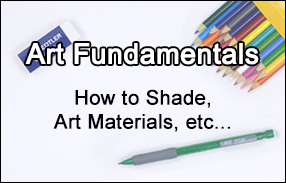
Step 15: Use the lines under the body on the right side as guides to draw the honey badger's hind legs the same way as the front legs. Follow the path of the guide as you lightly sketch the leg. When you get the shape right, darken the lines using quick, short strokes.
The claws of the hind feet are a lot smaller than the front feet, so don't draw them too long. Draw the hind leg on the other side of the body using the last angled line as a guide. Most of this leg is hidden by the honey badger's other leg and the body, so only draw the visible portion.
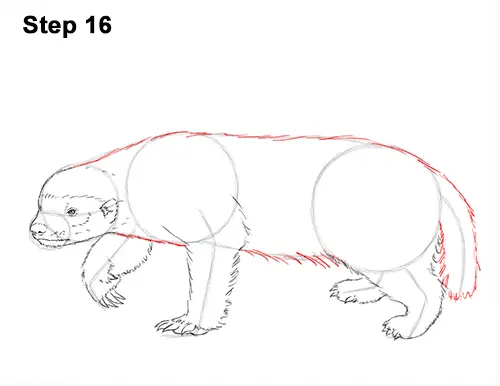
Step 16: Use the remaining lines as guides to draw the rest of the honey badger's body. Simply darken the outer edges of the initial guides to create the shape of the body. Use longer strokes for longer fur. Draw a series of strokes around the curved guide on the right to create the tail.
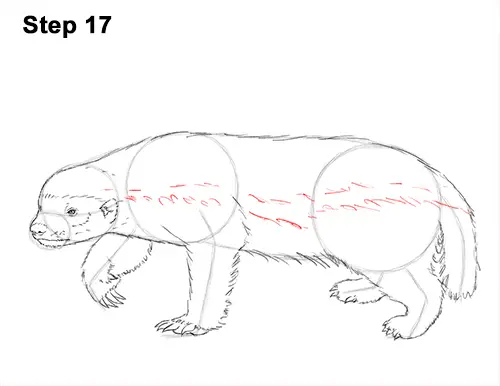
Step 17: Draw a line that's make up of quick, short strokes that extends from the head to the tail for the fur's color separation. Add a parallel line of fur above the first to further emphasize the honey badger's color separation.
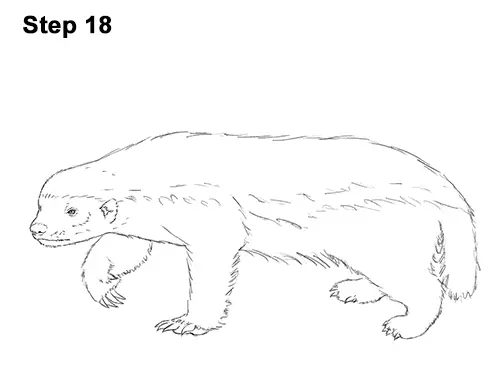
Step 18 (optional): For a cleaner look, erase as much as you can of the initial guide lines. Don't worry about erasing all of the guides. It's okay to leave some behind. Re-draw any final sketch lines that you may have accidentally erased.
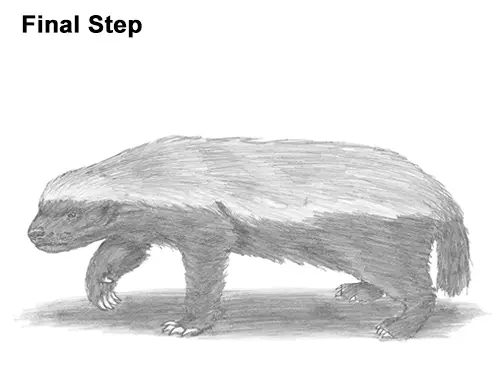
Final Step(optional): Add some shading to your drawing for extra detail. Honey badgers are basically black and white, so just shade the bottom half of the body darker than the top half. As you shade the honey badger's body, use a darker value in certain sections, like inside the ear, above the muzzle and under the eye, to add more structure.
To get different degrees of tonal value, vary the pressure on your pencil. Try not to shade the honey badger's claws as you add the value to the body. As you shade, use strokes that go in the general direction of the fur, basically left to right. Don't worry about shading too smoothly. The rough value gives the coat a furry texture. Shading can be time-consuming, so be patient and take breaks. As you add value to the top section, use very light strokes because the fur here is basically white. Add slightly darker strokes in certain sections to give the body more dimension and volume.
Add a cast shadow underneath. This helps ground the honey badger so it doesn't appear to be floating. Use a darker value near the middle of the shadow and a lighter value along the edge for the shadow's diffusion.
You can add more value to the honey badger's body if you'd like. It's always a good idea to use reference as you draw. Remember to pause the video after each step to draw at your own pace.
Thanks for watching! Subscribe to the How2DrawAnimals YouTube Channel for a new tutorial every Tuesday.
To learn how to draw popular cartoon characters, visit EasyDrawingTutorials.com.
RELATED TUTORIALS
 |
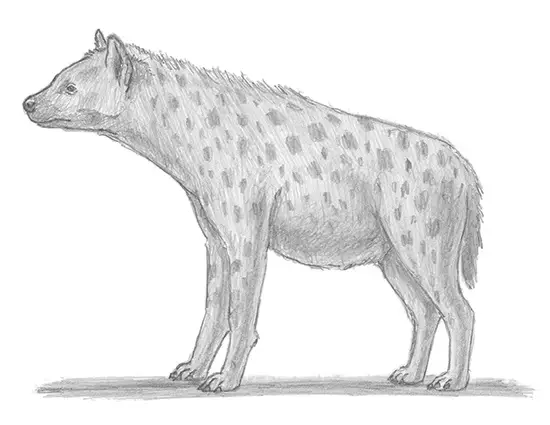 |
 |







